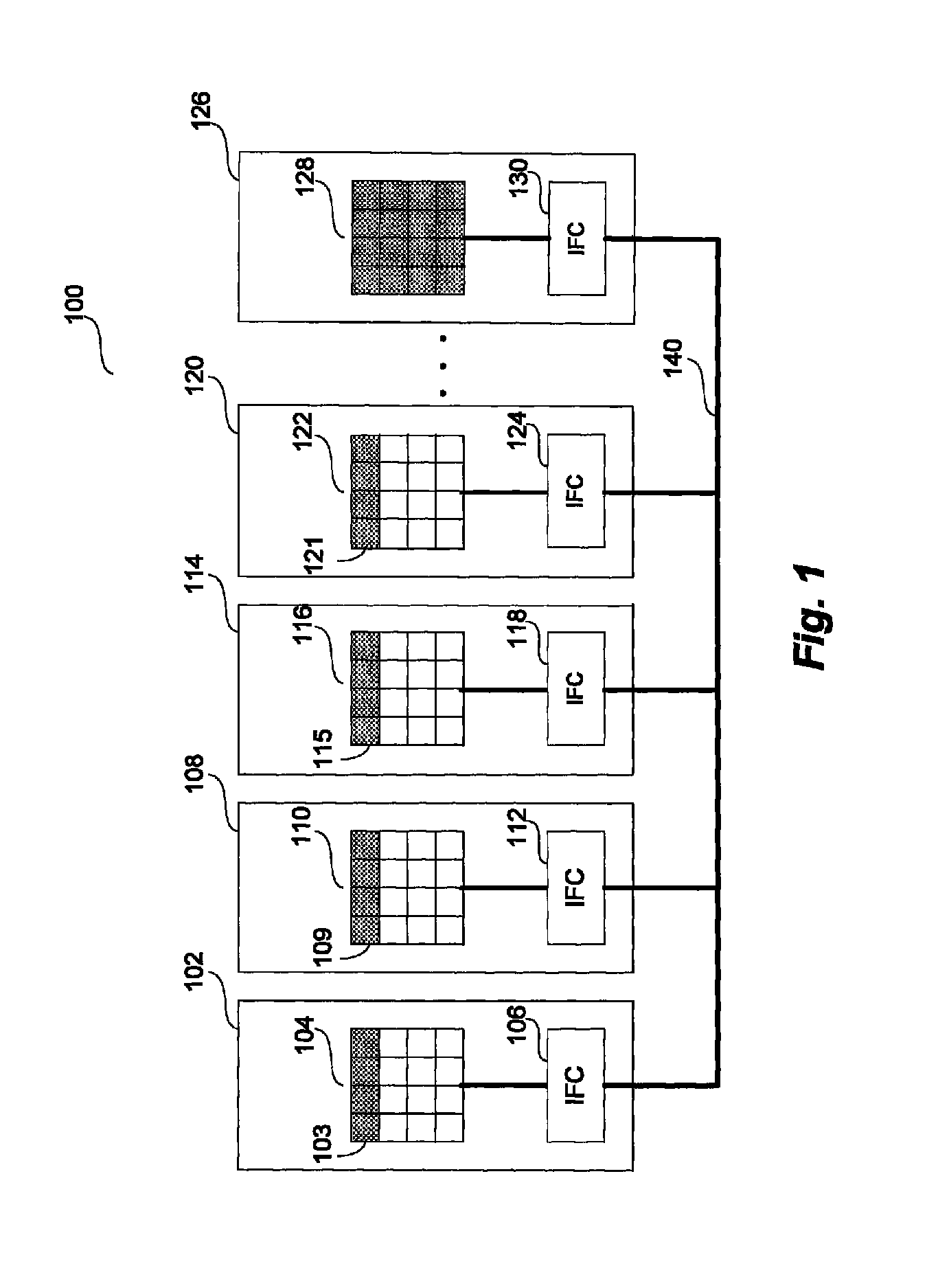Photonically-enabled in-flight data reorganization
a technology of in-flight data and reorganization, which is applied in the field of photonically enabled in-flight data, can solve the problems of affecting the operation of communication systems, and affecting the performance of current multi-processors, so as to reduce the amount of power-consuming hardware needed, accelerate and facilitate the reorganization of data.
- Summary
- Abstract
- Description
- Claims
- Application Information
AI Technical Summary
Benefits of technology
Problems solved by technology
Method used
Image
Examples
Embodiment Construction
[0045]A description of example embodiments of the invention follows.
[0046]An example system of processing nodes communicating over a shared photonic interconnect is first described. Processing nodes can store and utilize data communicated in transactions. While this is one example of a processing node, others may be suitable such as dedicated memory devices or input / output devices. For this example, the participants coordinate to synthesize a monolithic transaction to a single processing node. This can be accomplished by assigning each processing node a unique identifier and a simple program describing when it must send its component of the transaction on the photonic interconnect. The result, from the perspective of the receiving processing node, is a transaction that is indistinguishable from a point-to-point transaction between two processing nodes.
[0047]Turning to FIG. 1, a representative arrangement 100 of processing nodes (102, 108, 114, 120, 126), each of which contains a loc...
PUM
 Login to View More
Login to View More Abstract
Description
Claims
Application Information
 Login to View More
Login to View More - R&D
- Intellectual Property
- Life Sciences
- Materials
- Tech Scout
- Unparalleled Data Quality
- Higher Quality Content
- 60% Fewer Hallucinations
Browse by: Latest US Patents, China's latest patents, Technical Efficacy Thesaurus, Application Domain, Technology Topic, Popular Technical Reports.
© 2025 PatSnap. All rights reserved.Legal|Privacy policy|Modern Slavery Act Transparency Statement|Sitemap|About US| Contact US: help@patsnap.com



